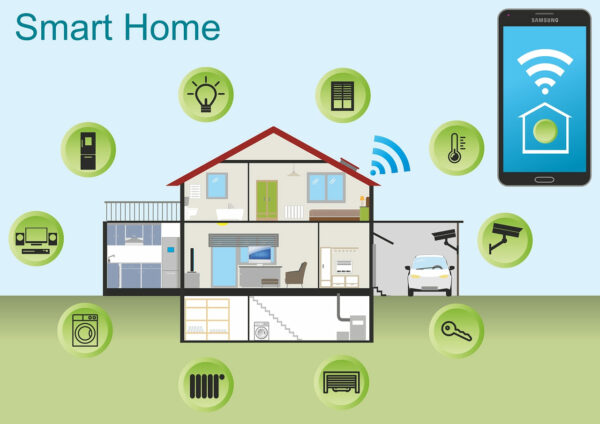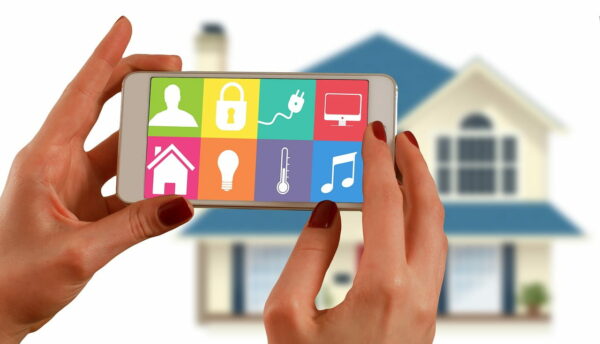✅ Last checked on
In our fast-paced world, convenience is key. Smart Home Network Integration is revolutionizing the way we live, simplifying our lives in ways we couldn’t have imagined just a few years ago. Imagine controlling your lights, security, and appliances with just a touch or a voice command.
This article is your comprehensive guide to understanding and implementing Smart Home Network Integration, offering insights, expert advice, and practical tips to make your life easier and more efficient.
The Evolution of Smart Homes

Smart Home Network Integration has come a long way since its inception. From standalone gadgets to interconnected systems, the journey has been remarkable.
Let’s delve into the evolution of smart homes and see how they have simplified our lives.
From Smart Speakers to Smart Ecosystems
Smart homes started with devices like smart speakers that could answer questions and play music. Today, they have evolved into complete ecosystems, connecting everything from thermostats to door locks, providing seamless automation and control.
The Rise of Voice Assistants
Voice assistants like Amazon’s Alexa and Google Assistant have become an integral part of smart homes. They can turn on lights, adjust the thermostat, and even order groceries, all with a simple voice command.
Energy Efficiency
One significant advantage of Smart Home Network Integration is energy efficiency. Smart thermostats learn your preferences and adjust temperatures accordingly, saving you money while reducing your carbon footprint.
Setting Up Your Smart Home Network

Now that we’ve explored the evolution of smart homes, let’s get practical. How can you set up your own Smart Home Network Integration? Here’s a step-by-step guide to get you started.
Assess Your Needs
Before diving in, assess your needs and priorities. Are you looking for security, convenience, energy savings, or all of the above? Understanding your goals will help you make informed decisions.
Choose Compatible Devices
Select devices that work seamlessly together. Ensure they are compatible with your chosen ecosystem (e.g., Amazon Alexa, Google Home). This will prevent compatibility issues down the road.
Install a Central Hub
A central hub acts as the brain of your smart home, allowing devices to communicate with each other. Some popular options include SmartThings, Hubitat, and Home Assistant.
Connect Your Devices
Follow the manufacturer’s instructions to connect and set up your devices. Most devices have user-friendly apps that guide you through the process.
Create Automation Rules
Once your devices are set up, create automation rules to customize your smart home experience. For example, you can program your lights to turn on when you arrive home or set your thermostat to adjust automatically based on your schedule.
Test and Troubleshoot
After setting up your smart home, test all devices and automation rules to ensure they work as intended. Troubleshoot any issues promptly.
Smart Home Network Integration – Simplifying Your Life
Smart Home Network Integration is all about making your life easier and more convenient. Here are some ways it can simplify your daily routine:
- Time-Saving Convenience: Imagine waking up to a hot cup of coffee brewed by your smart coffee maker. Your morning routine becomes smoother as your smart home prepares everything for you.
- Enhanced Security: Smart security systems provide real-time monitoring and alerts, keeping your home safe, and giving you peace of mind.
- Energy Savings: With smart thermostats and lighting, you can save on energy bills by ensuring devices are only active when needed.
- Customized Ambiance: Set the mood with customizable lighting and climate control. Create the perfect atmosphere for movie nights or romantic dinners with ease.
- Remote Control: Control your home from anywhere using your smartphone. Forgot to turn off the lights? No problem, just a few taps, and it’s done.
- Voice Control: Harness the power of voice commands to control your smart devices. It’s like having a personal assistant at your beck and call.
Frequently Asked Questions (FAQs)
How much does it cost to set up a smart home network?
The cost of setting up a smart home network can vary widely depending on the devices you choose and the complexity of your setup. You can start with a few smart plugs and bulbs for as little as $100, or you can invest in a comprehensive system that costs several thousand dollars. It’s essential to budget for both the devices and any professional installation services you may need.
Are smart home devices secure?
Security is a top concern for smart home devices. To enhance security, choose reputable brands, keep your devices’ firmware updated, use strong and unique passwords, and set up two-factor authentication when possible. Additionally, consider using a separate network for your smart devices to isolate them from your primary network.
Can I integrate devices from different manufacturers into my smart home network?
Yes, you can integrate devices from different manufacturers into your smart home network, but compatibility may vary. To ensure smooth integration, look for devices that support common communication protocols like Zigbee or Z-Wave, or use a central hub that can bridge the gap between different ecosystems.
How do I troubleshoot common issues with smart home devices?
Common issues with smart home devices can include connectivity problems, device unresponsiveness, or automation failures. Start by checking your Wi-Fi network’s stability and device connectivity. If problems persist, consult the device’s troubleshooting guide or contact customer support for assistance.
Are smart home devices easy to set up and use?
Most smart home devices are designed to be user-friendly and come with step-by-step setup instructions. However, the ease of setup can vary between devices. If you’re new to smart home technology, consider starting with simpler devices like smart plugs or bulbs before moving on to more complex systems.
What are some future developments in smart home technology?
The future of smart home technology holds exciting possibilities. We can expect advancements in artificial intelligence, increased device interoperability, and enhanced energy-saving features. Additionally, as technology evolves, smart home devices may become more affordable and accessible to a broader range of consumers.
Conclusion
Smart Home Network Integration is more than just a convenience; it’s a way of simplifying and enhancing your daily life. From controlling your home’s lighting to boosting security and saving energy, the possibilities are endless.
Embrace the future by transforming your living space into a smart home and enjoy the benefits of a more comfortable and efficient lifestyle.